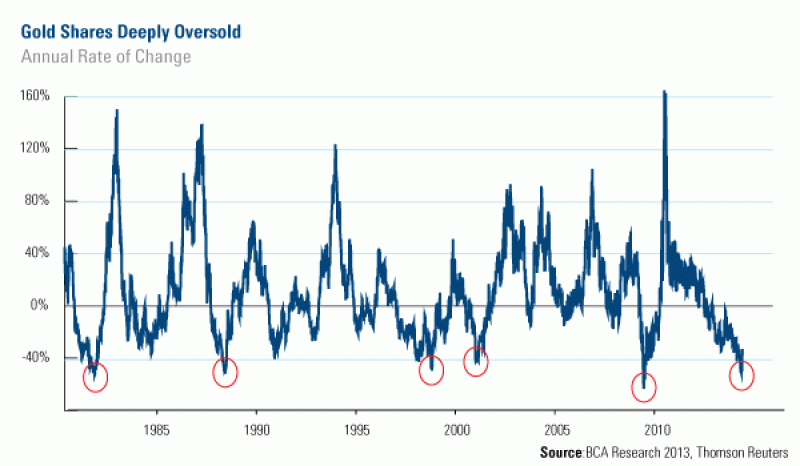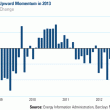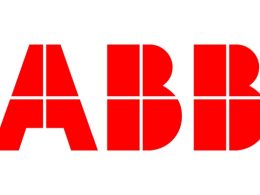Gold Market
For the week, spot gold closed at $1,311.75, down $21.55 per ounce, or 1.62 percent. Gold stocks, as measured by the NYSE Arca Gold Miners Index, fell 7.14 percent. The U.S. Trade-Weighted Dollar Index rose 0.34 percent for the week.
Strengths
- A report covering traders’ activities to July 23 shows that gold long positioning increased by 1.5 million ounces to 5.8 million ounces. This marks the second consecutive week of increases, with the change attributed to a combination of short covering and fresh long positions. Gold imports in India surged in July according to finance minister P. Chidambaram, who did not cite a specific number. Meanwhile, the bullion supply remained tight as the price premiums to London prices jumped. According to the chairman of the All India Gems & Jewellery Trade Federation, Haresh Soni, gold's price premium paid by jewelers to banks and other importers, more than doubled to $10 per ounce from $4 per ounce the prior week.
- Klondex Mines Ltd. reached a 52-week high on Friday, an exceptional feat among gold and precious metals sectors these days. A series of recent announcements have increased speculation that the company will release a detailed resource update in the coming weeks, paving its way to becoming a gold producer in the fourth quarter of the year. In addition, it was reported that members of the board of directors have acquired sizeable stock positions, in what can only be interpreted as a massive vote of confidence in the nascent company.
- Another interesting research piece by Paradigm Capital shows that gold producers have the capacity to further cut down costs. The report argues that costs will be reined and profits will be rebuilt, even if gold prices do not increase above $1,350 to $1,400 an ounce. Recall that global total cash costs dropped 27 percent from 1996 to 1999 in response to a 28 percent drop in the gold price. There is evidence of producers already implementing significant cost cuts, both at a mine level and at a corporate level, in order to adjust to the new price environment. One of these companies is Gran Colombia Gold Corp. who reported this week that its all in cost decreased from $1,545 per ounce in the first quarter, to approximately $1,200 per ounce in July.
Weaknesses
- Impairments among base and precious metals companies totaled more than $30 billion for gold and $2.7 billion for base metals so far in 2013. What is most shocking is the fact that the cumulative number likely exceeds $200 billion since 2008. With roughly 20 companies expected to report in the coming two weeks, the number could rise significantly.
- Steve Todoruk of Sprott published a commentary on the cost of political instability for gold miners. In his article, government abuses of gold companies were exemplified using the case of Lydian International. Lydian is a junior company with interests in a high-grade deposit in Armenia. The Armenian government recently halted construction at the Amulsar gold deposit, pending review of its building permits. The hold was introduced late in a project when the bulk of the capital had already been deployed. It appears the government is using this fact as a bargaining chip to force more taxes and royalties to be paid by the company. This company was a top takeover target for a big gold mining company. With the political move, their chances of being taken over have been greatly reduced. This means that the little company could end up having to build and operate the mine on its own, which is not the optimal outcome for its shareholders.
- Macquarie reports that the platinum sector in South Africa faces a perfect storm as a period of weak cyclical earnings coincides with unprecedented labor unrest, production interruptions, and government interference both in South Africa and Zimbabwe. More than 50 percent of South African platinum mines produce negative cash flows at current metal prices, at a time when labor unions are demanding salary increases as high as 100 percent. The reality check is that if metal prices do not rise significantly, a number of companies will find themselves in desperate need of additional external funding.
Opportunities
- The chart below shows that gold stocks are down on average more than 40 percent year-on-year. This level has offered an attractive entry point on the rare occasion when it has happened in the past. During the last occurrence, gold stocks went on to post a 160 percent return on a year-on-year basis.
- On the back of multi-billion dollar write-downs and massive dividend cuts reported by major gold producers this week, it is quite relieving that these companies slightly beat the NYSE Arca Gold Miners Index. This behavior appears to prove that gold miners' stocks have hit bottom. The market is reading these write-downs as a responsible measure companies are undertaking to adjust the value of their assets to reflect lower gold prices, while dividend cuts are making headway in cutting costs and strengthening the balance sheet. The most interesting proof is seen in Barrick Gold Corp. shares that barely budged after it reported a nearly $9 billion write-down, a sign that investors already priced the company's problems into the value of its stock.
- Geoff Candy of Mineweb reported that conventional wisdom suggests that an upward move in U.S. real interest rates will be bad for gold prices. This may not be the case any longer however, according to the World Gold Council. The WGC says a rise in U.S. real rates has to be seen in the context of rates cycles in other parts of the world, especially emerging markets. Given the structural changes that gold has experienced for more than a decade, it is likely that the U.S. real interest rate will be less relevant than before. This is particularly likely as demand increasingly originates in emerging markets where domestic inflation rates are more relevant than the U.S. inflation rate.
Threats
- The U.S. economy created only 162,000 jobs in July, while the Bureau of Labor Statistics went on to revise June’s job creation downward. Expectations were for a net of 185,000 jobs created. What hides in the fine print is the number of part-time jobs created at the expense of full time jobs. In July, 174,000 new part-time jobs were created, which is more than the total job creation. After a thorough dissection of the data presented, the employment report was best described by Gregory Weldon as “horrifically weak.”
- The widely discussed threat of dividend cuts among gold producers has materialized. Barrick Gold Corp. announced it would slash its dividend by 75 percent. Kinross Gold Corp., needing to protect its balance sheet following the earlier write-down of its Tasiast project, went all the way and suspended the payment of a dividend. The implications of implementing such a policy can be fearful. Numerous pension funds, retirement funds, and other investment firms are prohibited from investing in companies that do not earn them an income component. Amid an already dissatisfied investment public, Kinross appears to be neglecting a large portion of the general investment public.
- Mineweb published a compelling article on the current drought in mine-related transactions. Despite the ultra-low valuations which have set the stage for a buyer’s market, mining and metals companies appear not to bite. The most affected are juniors, who have experienced “a catastrophic withdrawal of equity capital, particularly for those at the early exploration end of the industry.” The report highlights that the average proceeds raised by juniors fell to just $1.6 million, while only twelve initial public offerings were reported during the first half of this year, a 69 percent decline from the previous year.















